
Exploring the Untamed Beauty of Etang National Park
Discover the lush, tranquil beauty of Etang National Park in Grenada. Explore crater lakes, hike through rainforests, and immerse yourself in diverse wildlife.
Nestled in the heart of Grenada, Etang National Park is a lush, verdant paradise that offers an escape into nature’s embrace. The park is home to the famous Grand Etang Lake, a crater lake formed in an extinct volcano. Visitors are greeted by the serene waters surrounded by dense rainforest, creating a picturesque setting that is perfect for relaxation and adventure alike. The park boasts a variety of hiking trails that cater to all levels of fitness. These trails lead you through the rich biodiversity of the rainforest, where you can spot colorful birds, playful monkeys, and a variety of tropical plants and flowers. One of the most popular trails is the Seven Sisters Falls, where you can enjoy a refreshing swim in natural pools. Etang National Park is also a haven for birdwatchers. The park is home to a diverse range of bird species, making it an ideal spot for wildlife photography. Bring your binoculars and camera to capture the beauty of the Grenada Dove, the Hook-billed Kite, and the Broad-winged Hawk. Whether you are a nature lover, a hiking enthusiast, or just looking for a peaceful retreat, Etang National Park offers something for everyone. Don’t forget to visit the visitor center for maps, guides, and more information to make the most of your visit.
Local tips in Etang National Park
- Wear comfortable hiking shoes and bring plenty of water.
- Visit early in the morning for the best birdwatching opportunities.
- Check the weather forecast before heading out, as trails can be slippery after rain.
- Bring insect repellent to avoid mosquito bites.
- Stop by the visitor center for detailed trail maps and local insights.
Exploring the Untamed Beauty of Etang National Park
Nestled in the heart of Grenada, Etang National Park is a lush, verdant paradise that offers an escape into nature’s embrace. The park is home to the famous Grand Etang Lake, a crater lake formed in an extinct volcano. Visitors are greeted by the serene waters surrounded by dense rainforest, creating a picturesque setting that is perfect for relaxation and adventure alike. The park boasts a variety of hiking trails that cater to all levels of fitness. These trails lead you through the rich biodiversity of the rainforest, where you can spot colorful birds, playful monkeys, and a variety of tropical plants and flowers. One of the most popular trails is the Seven Sisters Falls, where you can enjoy a refreshing swim in natural pools. Etang National Park is also a haven for birdwatchers. The park is home to a diverse range of bird species, making it an ideal spot for wildlife photography. Bring your binoculars and camera to capture the beauty of the Grenada Dove, the Hook-billed Kite, and the Broad-winged Hawk. Whether you are a nature lover, a hiking enthusiast, or just looking for a peaceful retreat, Etang National Park offers something for everyone. Don’t forget to visit the visitor center for maps, guides, and more information to make the most of your visit.
When is the best time to go to Etang National Park?
Iconic landmarks you can’t miss
Annandale Waterfall & Forest Park
Experience the stunning beauty of Annandale Waterfall & Forest Park, a hidden gem in Grenada, perfect for nature lovers and adventure seekers alike.
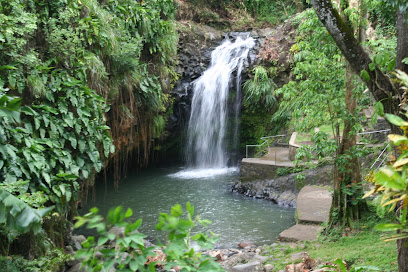
Belmont Estate
Explore the rich heritage and sustainable charm of Belmont Estate in Grenada, where history, agriculture, and delicious cuisine come together.
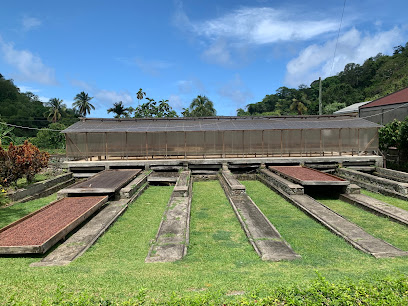
Grand Étang National Park/Lake
Explore the unparalleled beauty of Grand Étang National Park and Lake, a national reserve teeming with wildlife and stunning landscapes in Grenada.
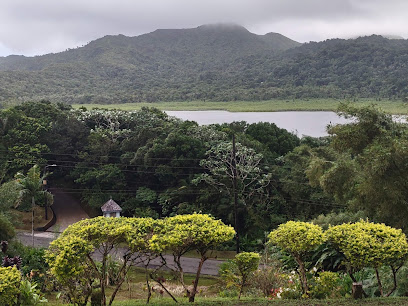
BBC Beach
Experience the breathtaking beauty of BBC Beach in Grenada, a serene escape with golden sands and crystal-clear waters perfect for relaxation and adventure.
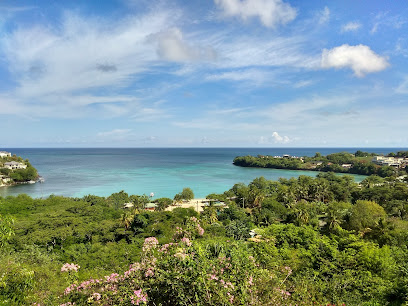
Fort George
Discover the rich history and breathtaking views at Fort George, a historical fortress overlooking St. George's in beautiful Grenada.
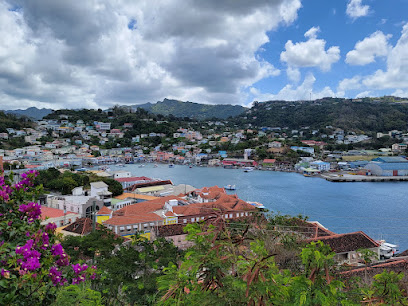
Fort Frederick
Explore the historical charm and stunning views of Fort Frederick in Grenada, a must-visit landmark that tells the tale of the island's colonial history.
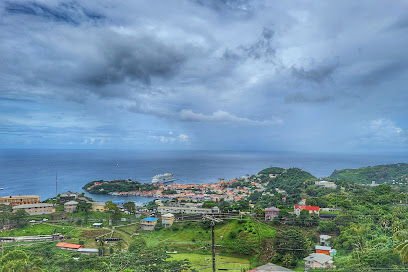
Concord Falls
Explore the enchanting Concord Falls, Grenada's natural gem perfect for swimming, hiking, and experiencing the lush beauty of the tropics.
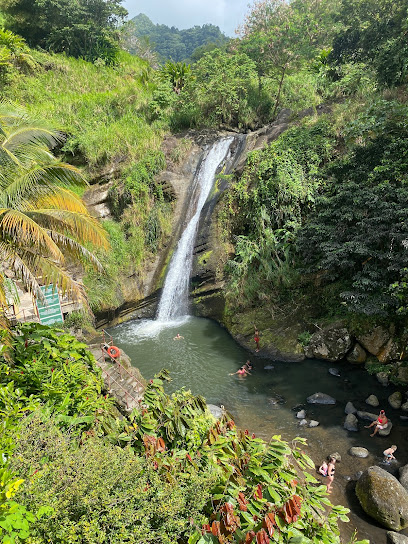
Mt Carmel Falls
Experience the breathtaking beauty of Mt. Carmel Falls in Grenada, a serene oasis perfect for adventure and relaxation amidst nature's splendor.

Leapers Hill
Discover the poignant history and breathtaking views at Leapers Hill, a must-visit landmark in Grenada's rich cultural landscape.
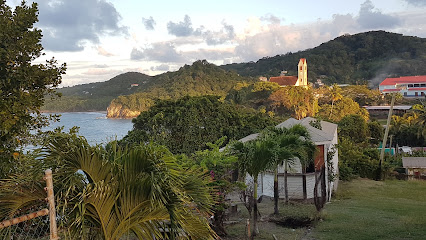
Welcome Stone
Explore the breathtaking views and serene atmosphere of Welcome Stone in Sauteurs, Grenada - a must-see scenic landmark.
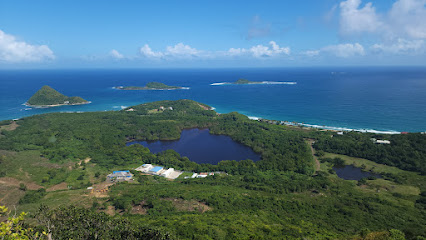
Grenada Underwater Sculpture Park
Explore the enchanting Underwater Sculpture Park in Grenada, where art and ocean life unite to create a breathtaking underwater adventure.
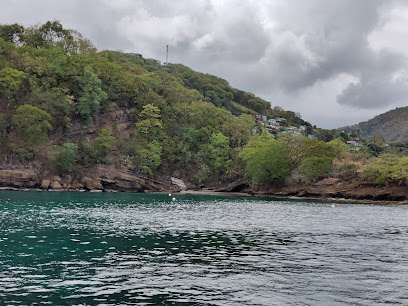
Laura Herb and Spice Garden
Discover the aromatic treasures of Grenada at Laura Herb and Spice Garden, a picturesque retreat showcasing the island's rich spice heritage.
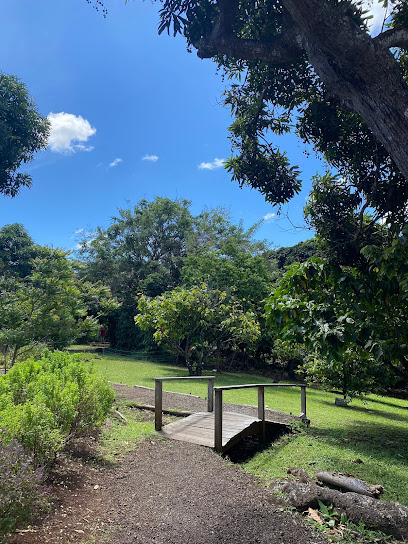
Seven Sisters Waterfalls
Explore the breathtaking Seven Sisters Waterfalls in Grenada - a stunning hiking destination with cascading falls and refreshing pools.

Levera Beach
Discover the breathtaking beauty of Levera Beach in Grenada, a perfect destination for relaxation, adventure, and nature exploration.
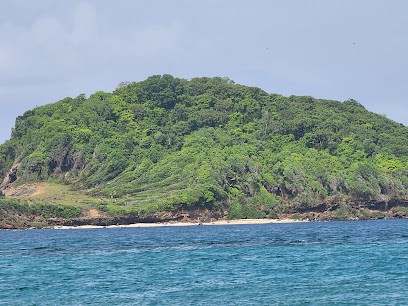
Grand Etang Lake
Experience the serene beauty of Grand Etang Lake in Grenada, a tranquil oasis surrounded by lush tropical forests and vibrant wildlife.
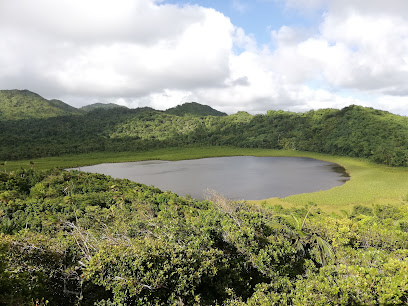
Unmissable attractions to see
BBC Beach
Discover BBC Beach in Grenada - a serene escape with soft sands, vibrant waters, and endless adventure for every traveler.
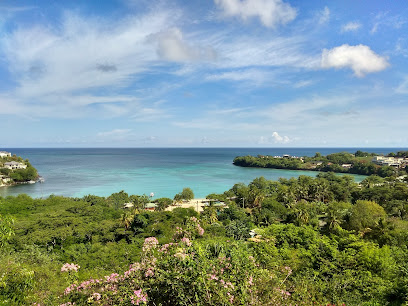
Esther's Bar
Discover the perfect blend of local flavors and breathtaking views at Esther's Bar on Grand Anse Beach in Grenada.
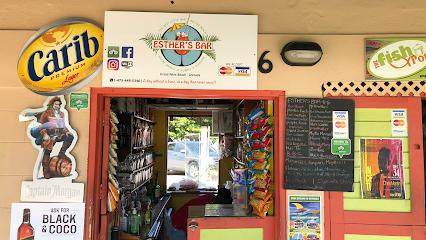
Grenada National Cricket Stadium
Discover the vibrant spirit of Grenada at the National Cricket Stadium, a haven for sports fans and cultural enthusiasts alike.
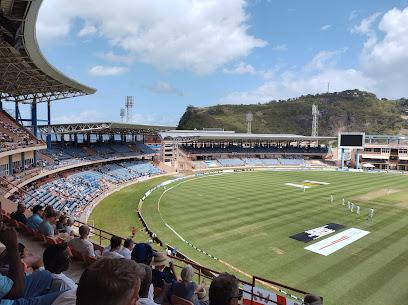
Levera Beach
Discover the serene beauty of Levera Beach in Grenada, where crystal-clear waters meet soft white sands amidst lush landscapes.
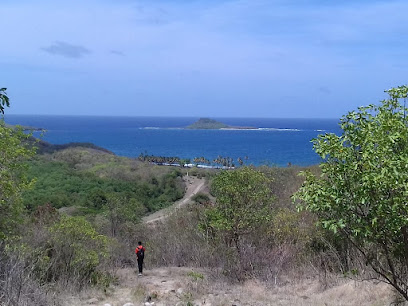
Grenada National Museum
Explore Grenada's vibrant history and culture at the Grenada National Museum, where the past comes alive through fascinating exhibits and artifacts.
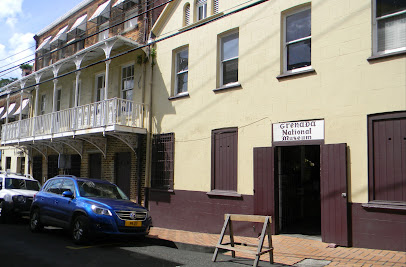
Anse La Roche Bay
Experience the untouched beauty of Anse La Roche Bay in Grenada, a serene paradise perfect for relaxation, swimming, and nature exploration.
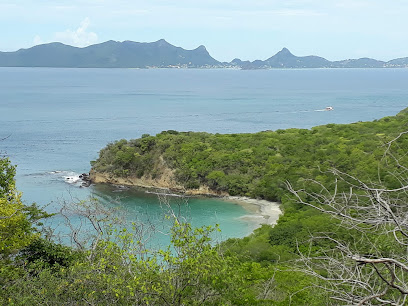
The Tower Estate
Discover the enchanting beauty and rich history of The Tower Estate in Grenada, a serene escape featuring lush gardens, a delightful tea house, and captivating museum exhibits.
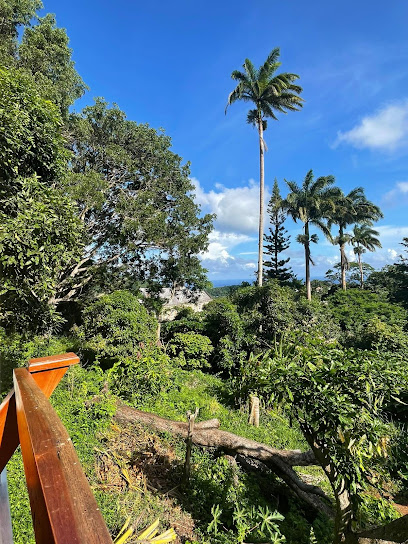
Sunnyside Garden
Experience the natural beauty and tranquility of Sunnyside Garden in St. George's, Grenada, a perfect retreat for nature lovers and relaxation seekers.
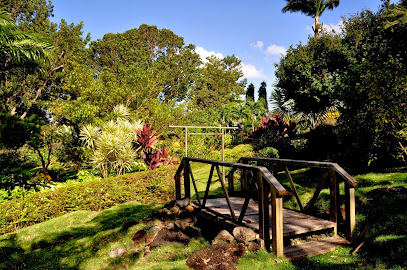
Fort Matthew
Discover the rich history and breathtaking views at Fort Matthew, a pivotal historical landmark in St. George's, Grenada.
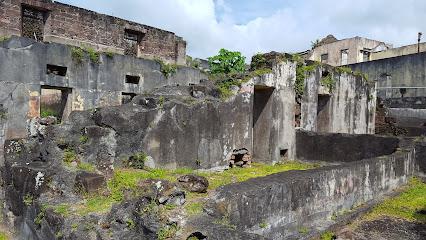
Sendall Tunnel
Explore the historic Sendall Tunnel in St. George’s, Grenada, a remarkable landmark blending history, culture, and breathtaking views.
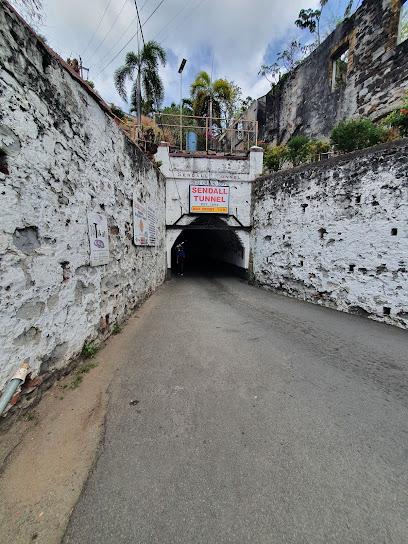
De La Grenade Nutmeg Garden
Explore Grenada's spice heritage at De La Grenade Nutmeg Garden, where the aroma of nutmeg fills the air and history comes alive.
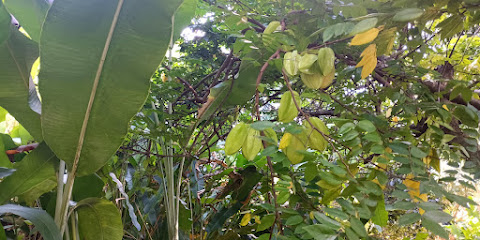
Grenada Cultural Foundation
Immerse yourself in Grenadian culture at the Grenada Cultural Foundation, a vibrant hub for art, music, and local heritage.

Molinière Point
Experience the enchanting beauty of Molinière Point, Grenada, where stunning views and vibrant marine life await every traveler.
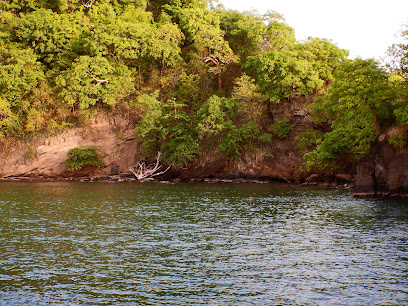
St George's Viewing Platform
Experience the stunning panoramic views of St George's at the breathtaking viewing platform in Grenada, a must-see for all tourists.
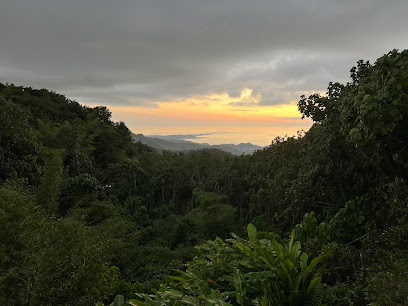
I'm Local Grenada Things to Do
Explore the enchanting capital of Grenada, St. George's, where stunning beaches, rich history, and vibrant culture await every traveler.

Essential places to dine
Dodgy Dock Restaurant Grenada
Experience a fusion of Caribbean and Mexican flavors at Dodgy Dock Restaurant in beautiful Grenada.
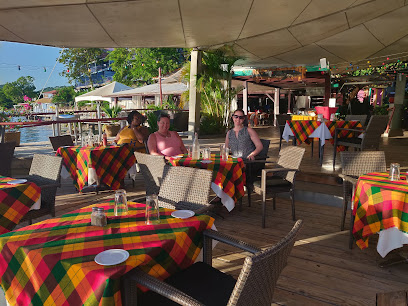
Sails Restaurant & Bar
Experience exquisite seafood dining at Sails Restaurant & Bar in Grenada's picturesque Carenage with stunning views and refreshing cocktails.
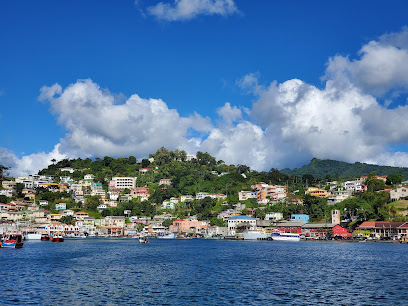
Aquarium
Discover exquisite dining at Aquarium Restaurant in Grenada with stunning ocean views and delicious local cuisine that captivates every palate.
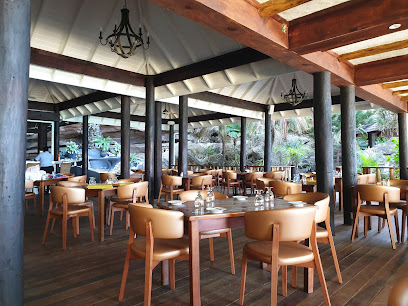
Coconut Beach Restaurant & Bar
Discover delicious local flavors at Coconut Beach Restaurant & Bar with breathtaking views on Grand Anse Beach in Grenada.
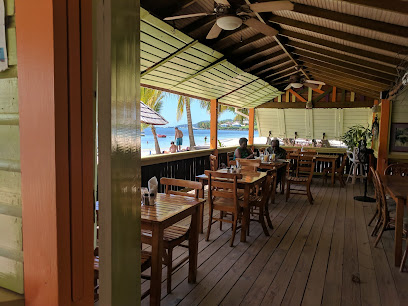
bbs crab back
Experience authentic Caribbean flavors at BB's Crab Back - renowned for fresh seafood and stunning ocean views in St. George's, Grenada.
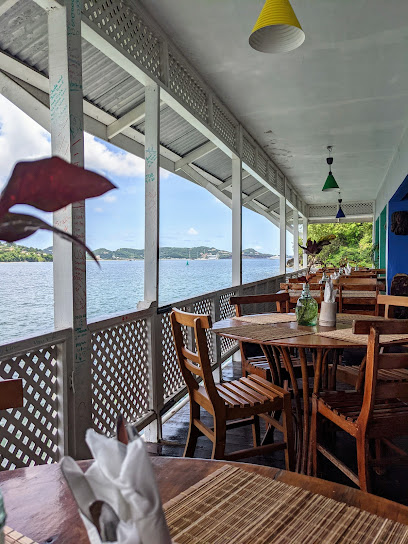
61° West Restaurant + Beach bar
Experience exquisite dining at 61° West Restaurant + Beach Bar with stunning views and delectable Caribbean cuisine in Grenada.
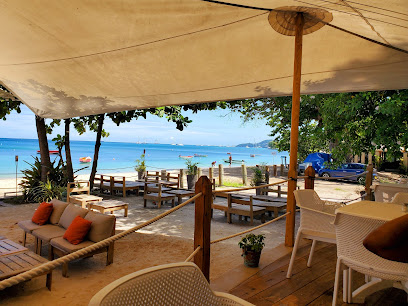
Patrick's Local Homestyle Restaurant
Experience authentic Caribbean cuisine at Patrick's Local Homestyle Restaurant in St. George's, Grenada - where every dish tells a story.

Sand Bar & Grill
Discover mouthwatering grilled dishes at Sand Bar & Grill in Lance aux Epines – where ocean views meet delightful cuisine.
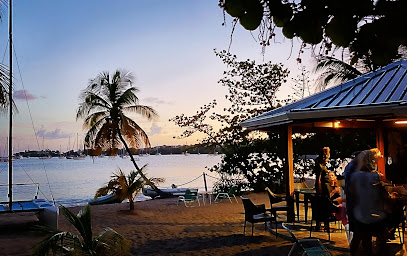
Antonio's Restaurant & Pizzeria
Experience authentic Italian cuisine at Antonio's Restaurant & Pizzeria in Grenada—where every dish tells a story.

Dexter's Restaurant
Experience authentic Grenadian flavors at Dexter's Restaurant in Fenton Village – where local ingredients meet warm hospitality.
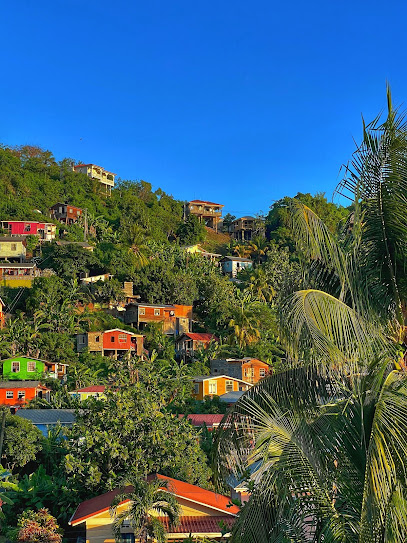
Secret Harbour Grenada Restaurant
Discover delightful Caribbean cuisine at Secret Harbour Grenada Restaurant with stunning waterfront views and an inviting atmosphere.
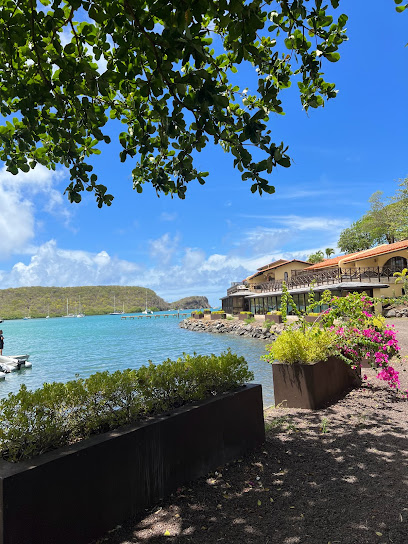
Rhodes Restaurant at Calabash, Grenada
Experience exquisite dining at Rhodes Restaurant in Grenada's Calabash Hotel; where local flavors meet culinary excellence amidst stunning ocean views.
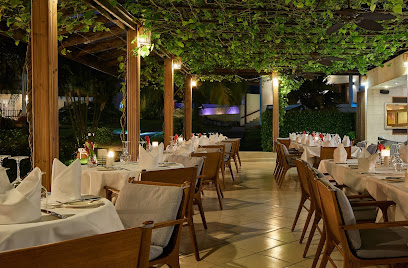
Grenadian Grill
Experience authentic Caribbean flavors at Grenadian Grill - where Mediterranean influences meet local ingredients for an unforgettable dining experience.
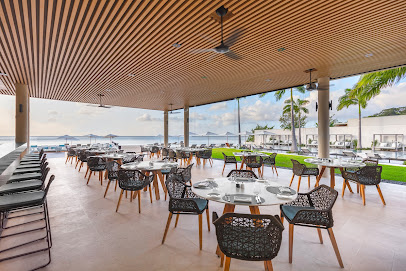
Great Etang House
Savor authentic Caribbean flavors in a picturesque setting at Great Etang House, Grenada's culinary gem amidst stunning natural beauty.
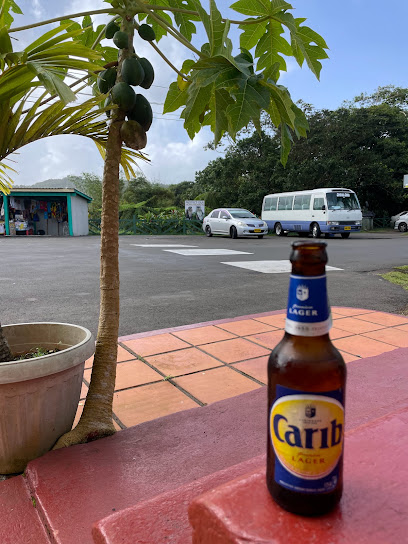
La Belle Creole Restaurant
Experience authentic Grenadian flavors at La Belle Creole Restaurant in Morne Rouge - a culinary delight for every traveler.

Markets, malls and hidden boutiques
Umbrella's Beach Bar
Experience the vibrant island life at Umbrella's Beach Bar in Grenada, where delicious food and refreshing cocktails await you by the stunning beach.
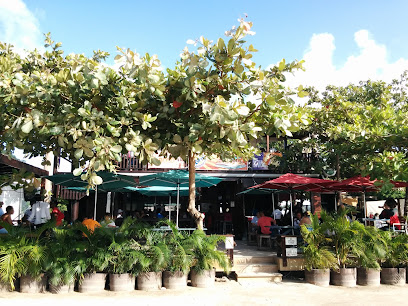
Spiceland Mall
Discover unique shopping and dining experiences at Spiceland Mall, your ultimate destination for local crafts and international brands in Grenada.

Grand Étang National Park/Lake
Experience the natural beauty and tranquility of Grand Étang National Park and Lake, a serene oasis in Grenada's lush landscape.
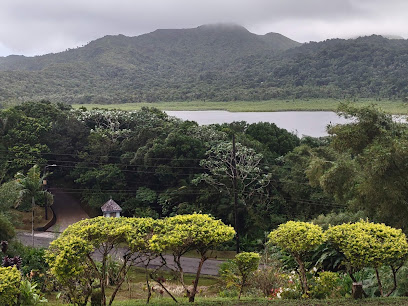
Esplanade Shopping Complex
Experience the best of shopping and dining at the Esplanade Shopping Complex in St. George's, Grenada, where local culture meets modern convenience.
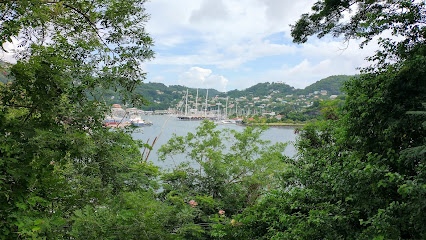
Grand Anse Craft and Spice Market
Discover the vibrant spirit of Grenada at the Grand Anse Craft and Spice Market, where local culture meets exquisite craftsmanship.
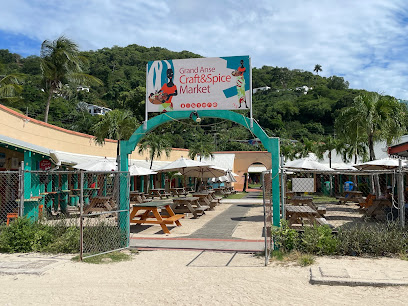
House of Chocolate Grenada Museum
Discover the rich chocolate heritage of Grenada at the House of Chocolate Museum, where indulgence meets education in every sweet bite.
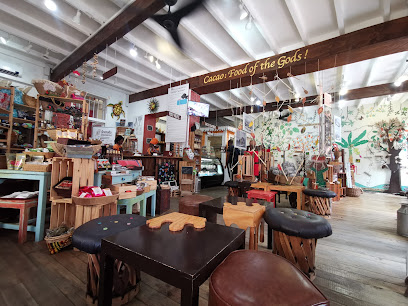
The Spice Basket
Experience the vibrant culture of Grenada at The Spice Basket, a performing arts theater showcasing local talent through music, dance, and art.
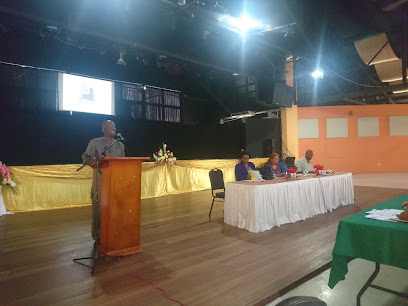
Grand Anse Shopping Center
Discover the ultimate shopping experience at Grand Anse Shopping Center in Grenada, offering diverse stores, dining, and local charm for an unforgettable day.
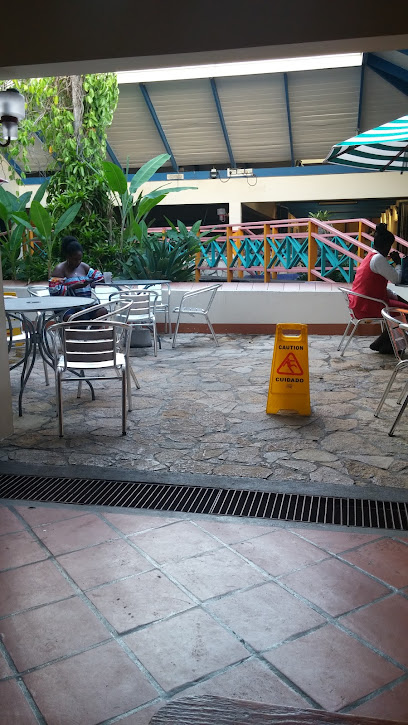
Laura Herb and Spice Garden
Experience the aromatic world of spices and herbs at Laura Herb and Spice Garden, a scenic gem in Grenada's lush landscape.
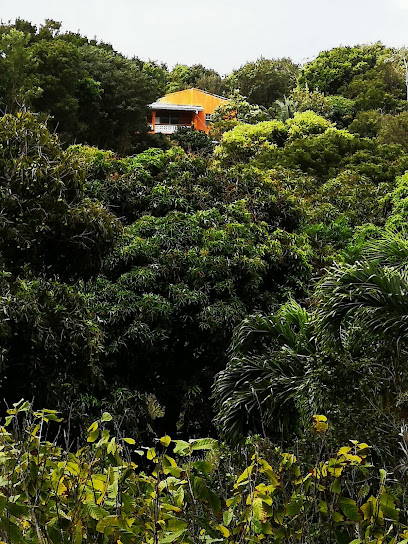
Grand Etang Lake
Experience the tranquil beauty and rich biodiversity of Grand Etang Lake, a hidden gem nestled in the heart of Grenada's tropical paradise.
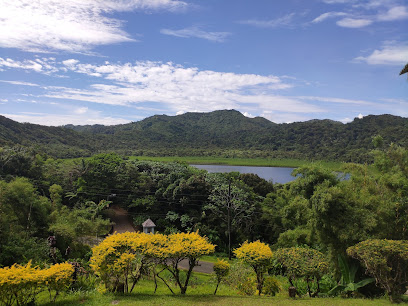
Art Fabrik
Discover unique clothing and local art at Art Fabrik, a vibrant store in St. George's, Grenada, showcasing the island's rich creative culture.
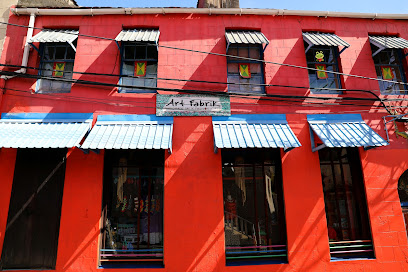
Le Marquis Shopping Complex
Explore Le Marquis Shopping Complex in Grenada for a unique blend of shopping, dining, and local culture in a vibrant tropical setting.
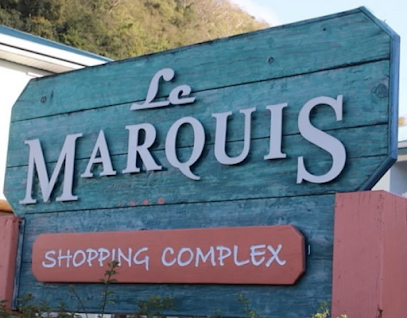
Basket N' Things Gnd
Discover the heart of Grenada through unique crafts and locally sourced gifts at Basket N' Things, a must-visit gift shop in True Blue.
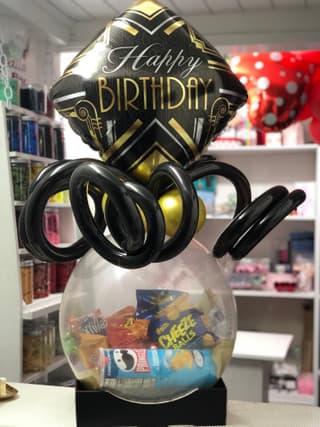
All Things Nutmeg (GCNA Head Office)
Explore the vibrant spirit of Grenada through nutmeg at All Things Nutmeg, a souvenir store offering authentic island products and experiences.

Harry Edwards Jewelers
Explore exquisite jewelry and personalized service at Harry Edwards Jewelers in St. George's, Grenada - a treasure trove for tourists.

Essential bars & hidden hideouts
Umbrella's Beach Bar
Experience the best of Grenadian culture at Umbrella's Beach Bar, where delicious cuisine meets stunning ocean views and vibrant atmosphere.
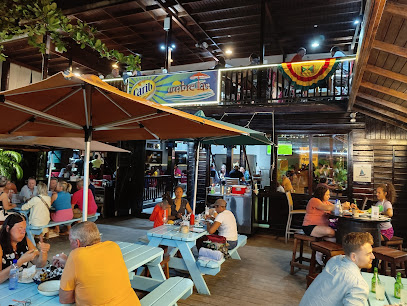
Dodgy Dock Restaurant Grenada
Experience the vibrant flavors of the Caribbean and Mexico at Dodgy Dock Restaurant in Grenada, where culinary delights meet breathtaking waterfront views.
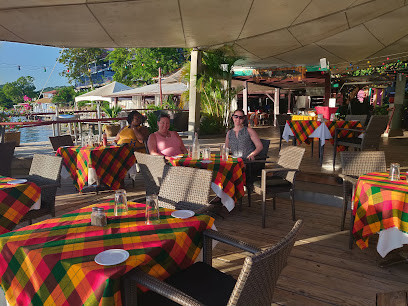
Sails Restaurant & Bar
Discover the taste of Grenada at Sails Restaurant & Bar, where fresh seafood and tropical cocktails meet breathtaking waterfront views.
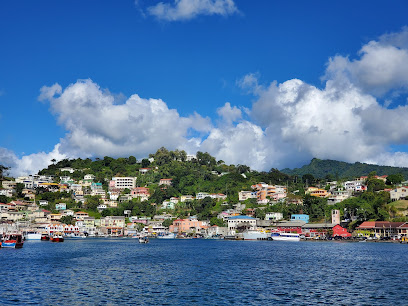
Grand Étang National Park/Lake
Experience the tranquil beauty of Grand Étang National Park and Lake, a vibrant national reserve in Grenada ideal for nature lovers and adventure seekers.
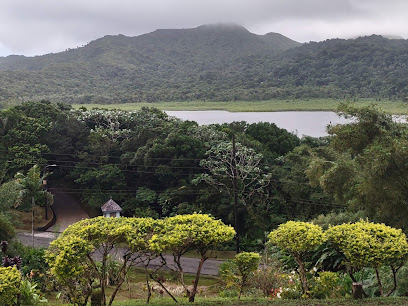
Aquarium
Experience the best of Grenadian cuisine with stunning ocean views at the Aquarium Restaurant, a true culinary treasure by the sea.
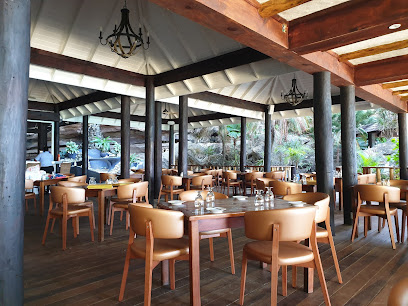
Lavo Lanes
Experience the ultimate blend of bowling, dining, and nightlife at Lavo Lanes in Grenada for an unforgettable evening.

Coconut Beach Restaurant & Bar
Experience the perfect blend of local flavors and stunning ocean views at Coconut Beach Restaurant & Bar on Grand Anse Beach.
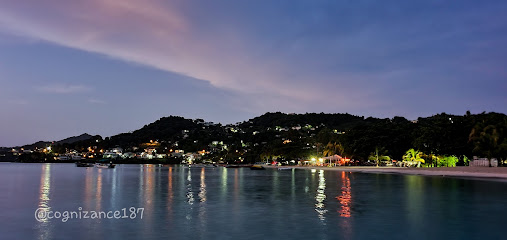
Esther's Bar
Experience vibrant beachside relaxation at Esther's Bar, Grand Anse's premier spot for refreshing drinks and stunning ocean views.
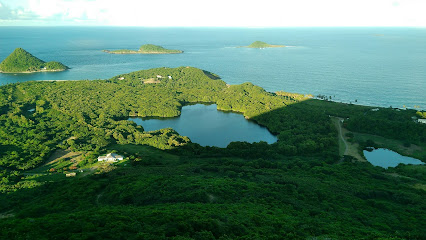
61° West Restaurant + Beach bar
Discover the best of Caribbean cuisine at 61° West Restaurant + Beach Bar, where breathtaking views meet delightful flavors in Grenada.
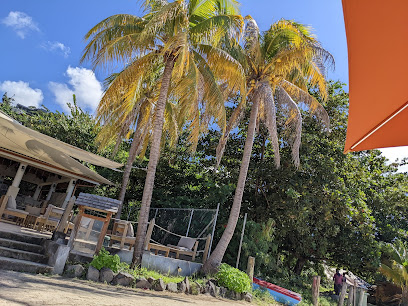
Bananas (Grenada)
Experience the essence of Grenada at Bananas Bar & Restaurant, where Caribbean flavors meet tropical vibes in a stunning setting.
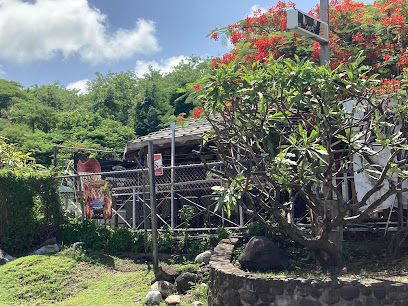
Prickly Bay Tiki Bar and Restaurant
Discover the vibrant flavors and laid-back atmosphere at Prickly Bay Tiki Bar and Restaurant in Grenada, where every meal is a tropical escape.
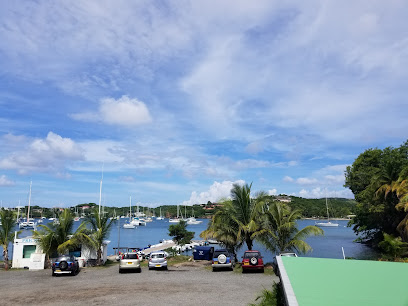
Patrick's Local Homestyle Restaurant
Discover the heart of Grenadian cuisine at Patrick's Local Homestyle Restaurant, where every meal tells a story of Caribbean heritage and flavor.
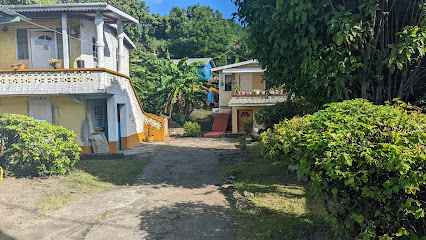
Spice Affair Restaurant
Discover the essence of Indian cuisine at Spice Affair Restaurant in Grenada, where rich flavors and warm hospitality await every guest.
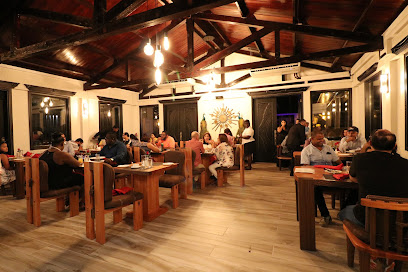
Victory Bar and Restaurant
Explore the authentic tastes of Grenada at Victory Bar and Restaurant, where local flavors meet a warm, inviting atmosphere.
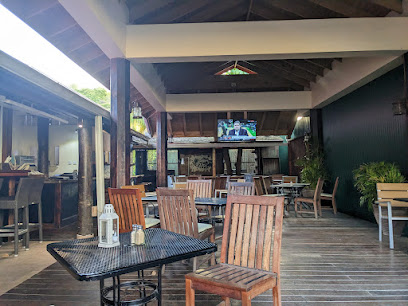
La Plywood Beach Bar Café
Experience the vibrant Caribbean vibe at La Plywood Beach Bar Café in St. George's, Grenada, where relaxation meets delicious local cuisine and stunning ocean views.
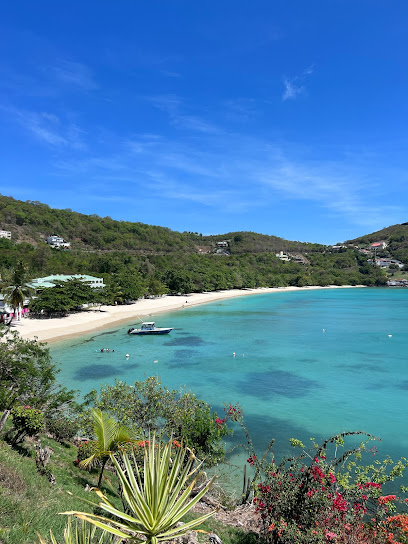
Local Phrases about Etang National Park
-
- HelloWah gwan
[wah gwan] - GoodbyeLata
[lay-ta] - YesYeah man
[yeah man] - NoNah man
[nah man] - Please/You're welcomeNuff respect
[nuff re-spect] - Thank youTank yuh
[tank yuh] - Excuse me/SorrySarry
[sarry] - How are you?How yuh doin?
[how yuh doin] - Fine. And you?Mi deh yah
[me deh yah] - Do you speak English?You speak English?
[you speak english] - I don't understandMi nuh undastan
[me no un-da-stan]
- HelloWah gwan
-
- I'd like to see the menu, pleaseMi wah see di menu, please
[me wah see dee menu, please] - I don't eat meatMi nuh eat meat
[me no eat meat] - Cheers!Cheers!
[cheers] - I would like to pay, pleaseMi wah pay, please
[me wah pay, please]
- I'd like to see the menu, pleaseMi wah see di menu, please
-
- Help!Help!
[help] - Go away!Gweh!
[gweh] - Call the Police!Call di Police!
[call dee police] - Call a doctor!Call a doctor!
[call a doctor] - I'm lostMi lost
[me lost] - I'm illMi sick
[me sick]
- Help!Help!
-
- I'd like to buy...Mi wah buy...
[me wah buy] - I'm just lookingMi jus a look
[me jus a look] - How much is it?A wah di price?
[ah wah dee price] - That's too expensiveDat too much
[dat too much] - Can you lower the price?Yuh can drop di price?
[you can drop dee price]
- I'd like to buy...Mi wah buy...
-
- What time is it?A wah time it deh?
[ah wah time it deh] - It's one o'clockIt one o'clock
[it one o'clock] - Half past (10)Half ten
[half ten] - MorningMawnin
[mawnin] - AfternoonAftanoon
[aftanoon] - EveningEvenin
[evenin] - YesterdayYesterday
[yesterday] - TodayToday
[today] - TomorrowTomorrow
[tomorrow] - 1One
[one] - 2Two
[two] - 3Tree
[tree] - 4Fo'
[fo'] - 5Fi'
[fi'] - 6Six
[six] - 7Seven
[seven] - 8Eight
[eight] - 9Nine
[nine] - 10Ten
[ten]
- What time is it?A wah time it deh?
-
- Where's a/the...?Whey di...
[way dee] - What's the address?Wah di address deh?
[wah dee address deh] - Can you show me (on the map)?Yuh can show mi (pan di map)?
[you can show me (pan dee map)] - When's the next (bus)?When di nex (bus)?
[when dee nex (bus)] - A ticket (to ....)A ticket (to ....)
[a ticket (to ....)]
- Where's a/the...?Whey di...
History of Etang National Park
-
Before the arrival of European settlers, the area now known as Etang National Park was inhabited by the indigenous Arawak and later the Carib peoples. These early inhabitants utilized the rich biodiversity of the region for sustenance and cultural practices. Archaeological findings, such as pottery shards and stone tools, provide evidence of their presence and lifestyle.
-
During the 17th century, French and later British colonizers took control of Grenada. The lush landscapes of the Etang area, characterized by its dense forests and fertile soil, became valuable for agricultural endeavors, particularly the cultivation of sugar cane, cocoa, and spices. However, the rugged terrain of the Etang forest remained relatively untouched compared to coastal areas.
-
Mount Qua Qua, one of the highest peaks in Grenada, is located within Etang National Park. Throughout the 19th and early 20th centuries, the mountain and its surrounding forests were recognized for their ecological importance. Efforts to conserve the natural landscape began in earnest during this period, laying the groundwork for the establishment of the national park.
-
In 1990, Etang National Park was officially established, covering an area of over 3,800 acres. The park was created to protect the island’s rich biodiversity, including its pristine rainforests, diverse wildlife, and the scenic Grand Etang Lake, a volcanic crater lake at its heart. This move marked a significant step in Grenada’s commitment to environmental conservation and sustainable tourism.
-
Etang National Park is not only a natural haven but also a cultural treasure for Grenada. The park features several trails and sites of historical and cultural interest, including traditional fishing spots, ancient Carib sites, and remnants of colonial-era plantations. The park has become a popular destination for both locals and tourists, offering activities such as hiking, bird watching, and exploring the lush rainforest.
Etang National Park Essentials
-
Etang National Park is located in the central part of Grenada. The nearest international airport is Maurice Bishop International Airport (GND) in St. George's, approximately 25 kilometers away. From the airport, you can take a taxi or rent a car to reach the park. The journey typically takes around 45 minutes by road. Public buses are also available but may require multiple transfers.
-
Within Etang National Park, most attractions are accessible by foot. For those who prefer not to walk, local taxis and car rentals are available. Keep in mind that roads within the park can be narrow and winding, so driving cautiously is advised. Public buses and minibuses (known locally as 'Reggae Buses') operate in Grenada and can take you to nearby towns, but they may not have direct routes to all park entrances.
-
The official currency in Grenada is the Eastern Caribbean Dollar (XCD). U.S. dollars are also widely accepted. Credit and debit cards are accepted in most hotels, restaurants, and larger shops, but it's advisable to carry some cash for smaller vendors and rural areas. ATMs are available in the towns surrounding the park, but it’s a good idea to withdraw sufficient cash before entering the park.
-
Etang National Park is generally safe for tourists. However, it’s wise to take standard precautions. Avoid walking alone at night in isolated areas and always keep an eye on your belongings. While there are no specific high-crime areas targeting tourists in the park, staying vigilant and aware of your surroundings is recommended. If hiking, always stick to marked trails and consider going with a guide.
-
In case of emergency, dial 911 for immediate assistance. The nearest hospital is in St. George's, about 45 minutes away by car. It’s recommended to have travel insurance that covers medical emergencies. For minor health issues, there are pharmacies in the towns around the park where you can purchase over-the-counter medications. Rangers within the park can also assist in emergencies.
-
Fashion: Do wear comfortable, breathable clothing suitable for hiking. Avoid high heels or dress shoes. Religion: Do respect local customs and traditions. Public Transport: Do be respectful and patient as schedules can be unpredictable. Don't eat or drink on public transport. Greetings: Do greet people with a friendly 'Good day' or 'Hello.' Eating & Drinking: Do try local dishes and accept food offerings graciously. Don't refuse hospitality, as it is considered impolite.
-
To experience Etang National Park like a local, consider hiring a local guide who can provide insights into the park’s flora, fauna, and history. Visit the local markets in nearby towns such as St. George's for fresh produce and traditional Grenadian goods. Engage with locals, who are often friendly and willing to share stories about the park and their culture. Don't miss the Grand Etang Lake, a crater lake offering stunning views and an abundance of wildlife. For a unique experience, take part in a bird-watching tour to spot some of the island’s rare species.
Trending Landmarks in Etang National Park
Nearby Cities to Etang National Park
-
Things To Do in Westerhall
-
Things To Do in Guava
-
Things To Do in Gouyave
-
Things To Do in Victoria
-
Things To Do in Sauteurs
-
Things To Do in Hillsborough
-
Things To Do in Union Island
-
Things To Do in Mayreau
-
Things To Do in Canouan
-
Things To Do in Mustique
-
Things To Do in Port Elizabeth
-
Things To Do in Bequia
-
Things To Do in Kingstown
-
Things To Do in Barrouallie
-
Things To Do in Chateaubelair








